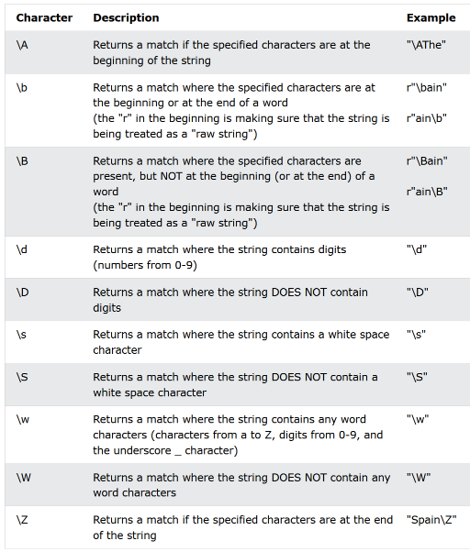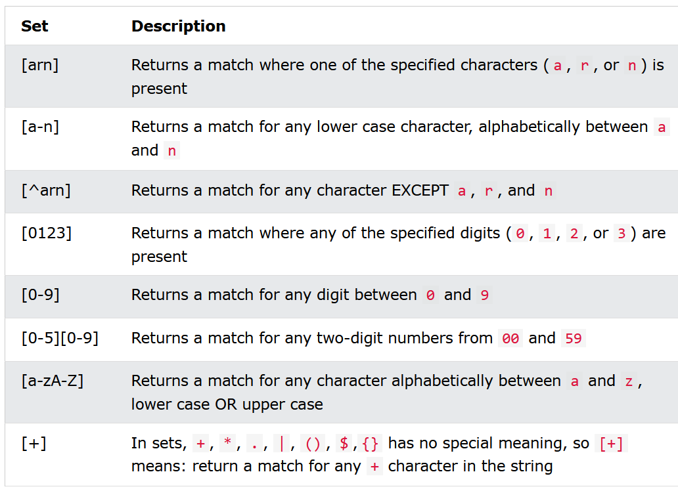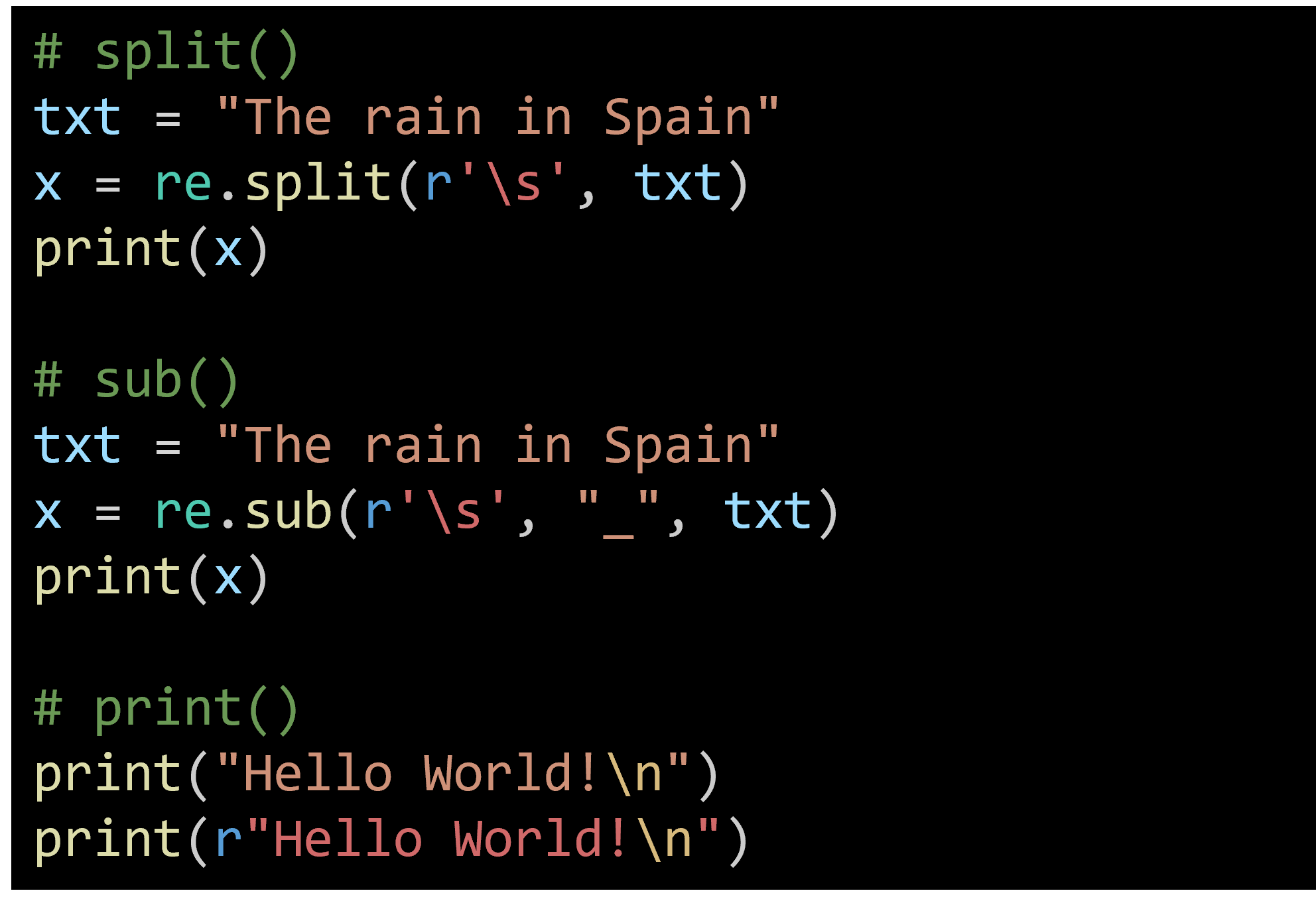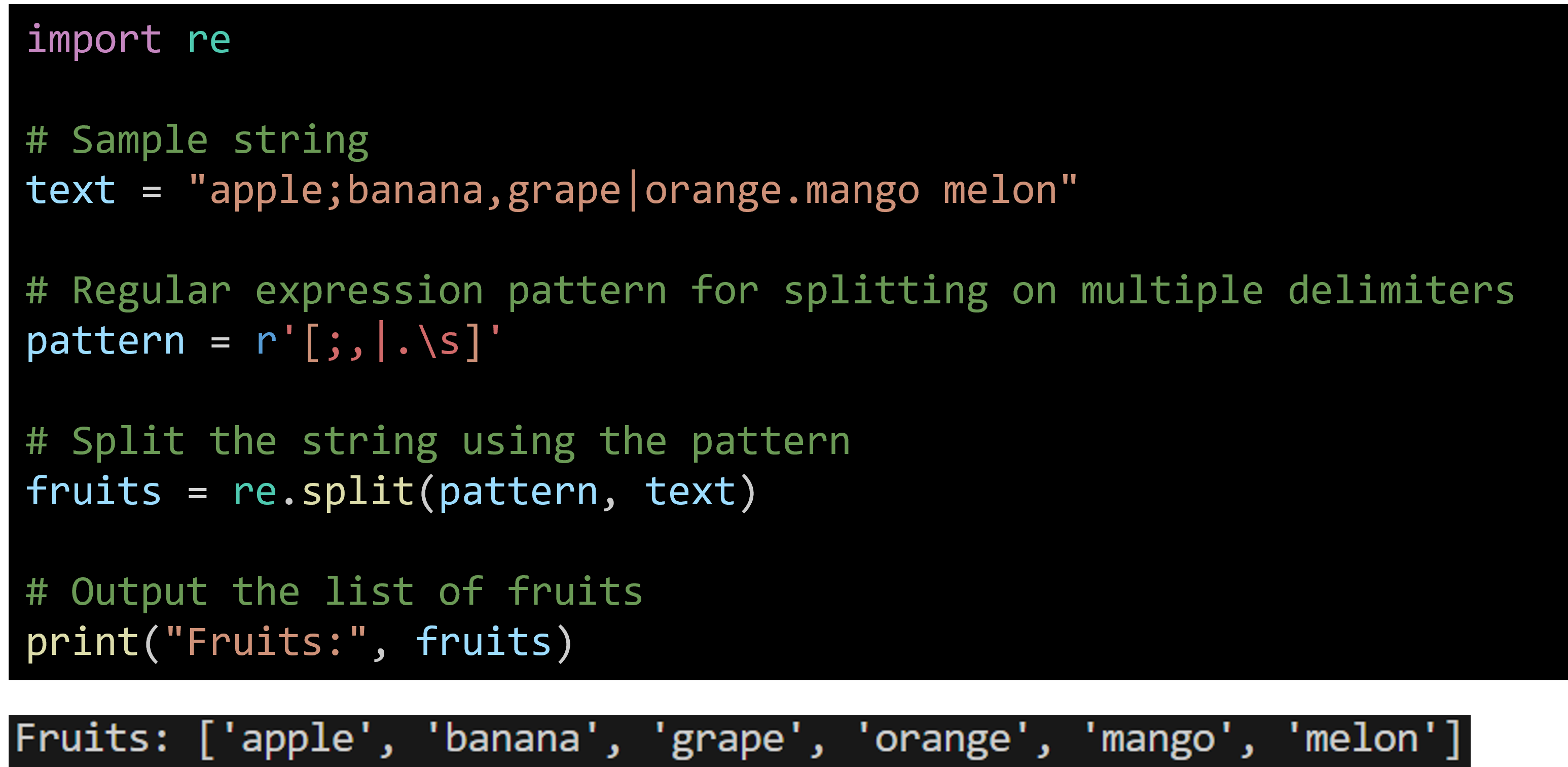Regular expressions are a powerful way to specify patterns for matching strings. In Python, the built-in re module provides methods for working with regular expressions. Let's break this down with an example and some explanations.
RegEx functions
- findall(): Returns a list containing all matches
- search() : Returns a Match object if there is a match anywhere in the string
- split(): Returns a list where the string has been split at each match
- sub(): Replaces one or many matches with a string
Metacharacters

Special Sequences

Sets

Examples




Example in Python Interactive Mode
Here's an example of how to use the re.match method to find matches in strings:
| >>>import re # Get help information about re.match >>>help(re.match) # Use re.match to find a match for the pattern ".*bob.*" in the string "bob and alice" >>>match = re.match(".*bob.*", "bob and alice") >>>print(match) |
Output will be:
| <re.Match object; span=(0, 13), match='bob and alice'> |
Explanation:
- Importing the Module: First, we import the re module, which contains all the functions needed for regular expressions.
- Getting Help: Using help(re.match), we can see detailed information about the re.match method.
- Matching: The re.match method checks if the pattern in the first parameter matches the string in the second parameter. If it does, it returns a Match object.
In our example, the pattern ".*bob.*" matches the string "bob and alice". This is because the pattern specifies that the string can contain "bob" with any characters before and after it.
Special Characters in Regular Expressions
Regular expressions use special characters to define patterns efficiently:
- .*: This means "0 or more instances of any single character."
- .: This means "any single character."
These special characters allow us to create complex patterns without writing lengthy logic.
Practical Use
Regular expressions are widely used in programming for tasks like:
- Searching for specific patterns in text.
- Validating input data (like email addresses or phone numbers).
- Replacing parts of strings.